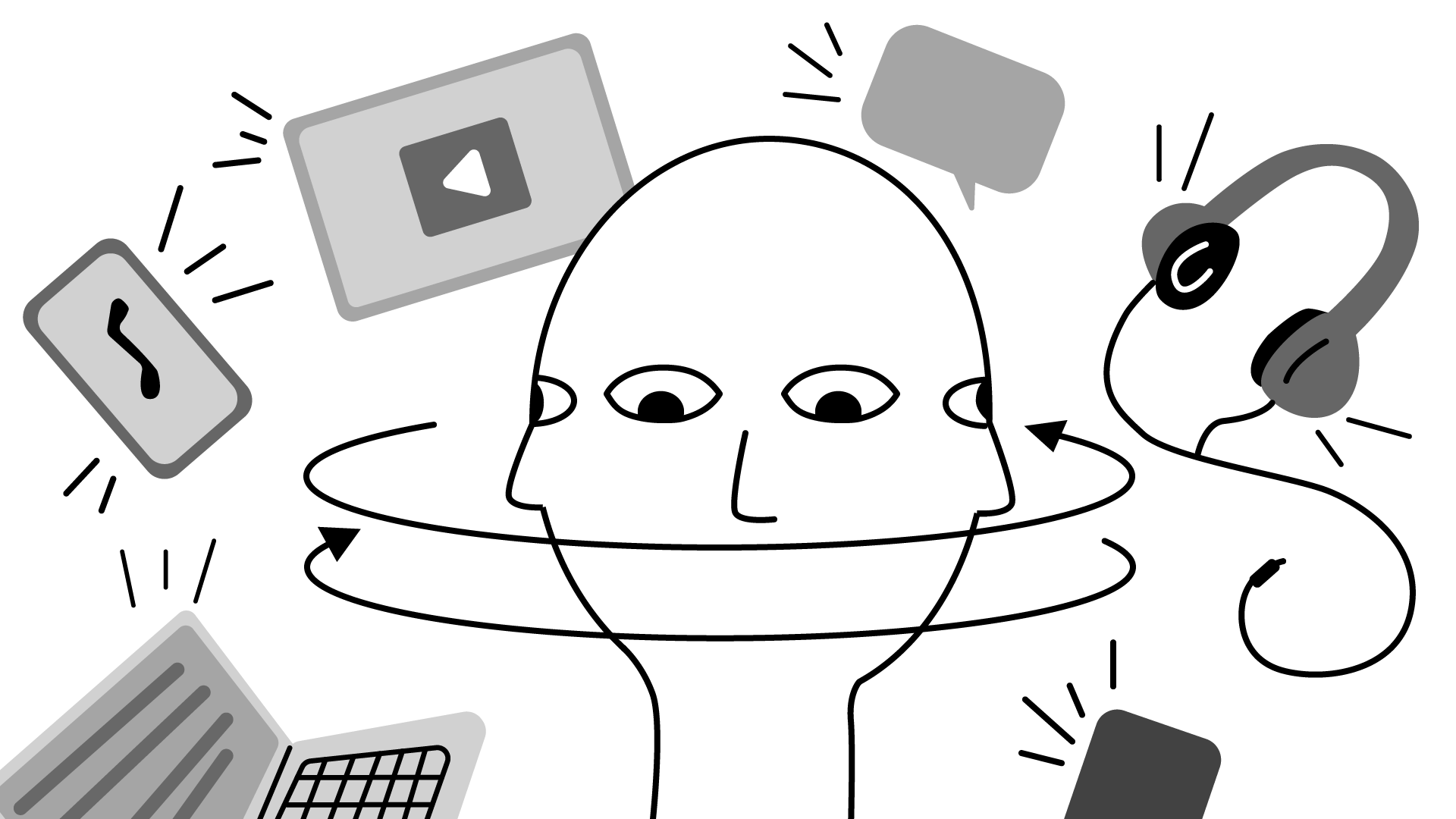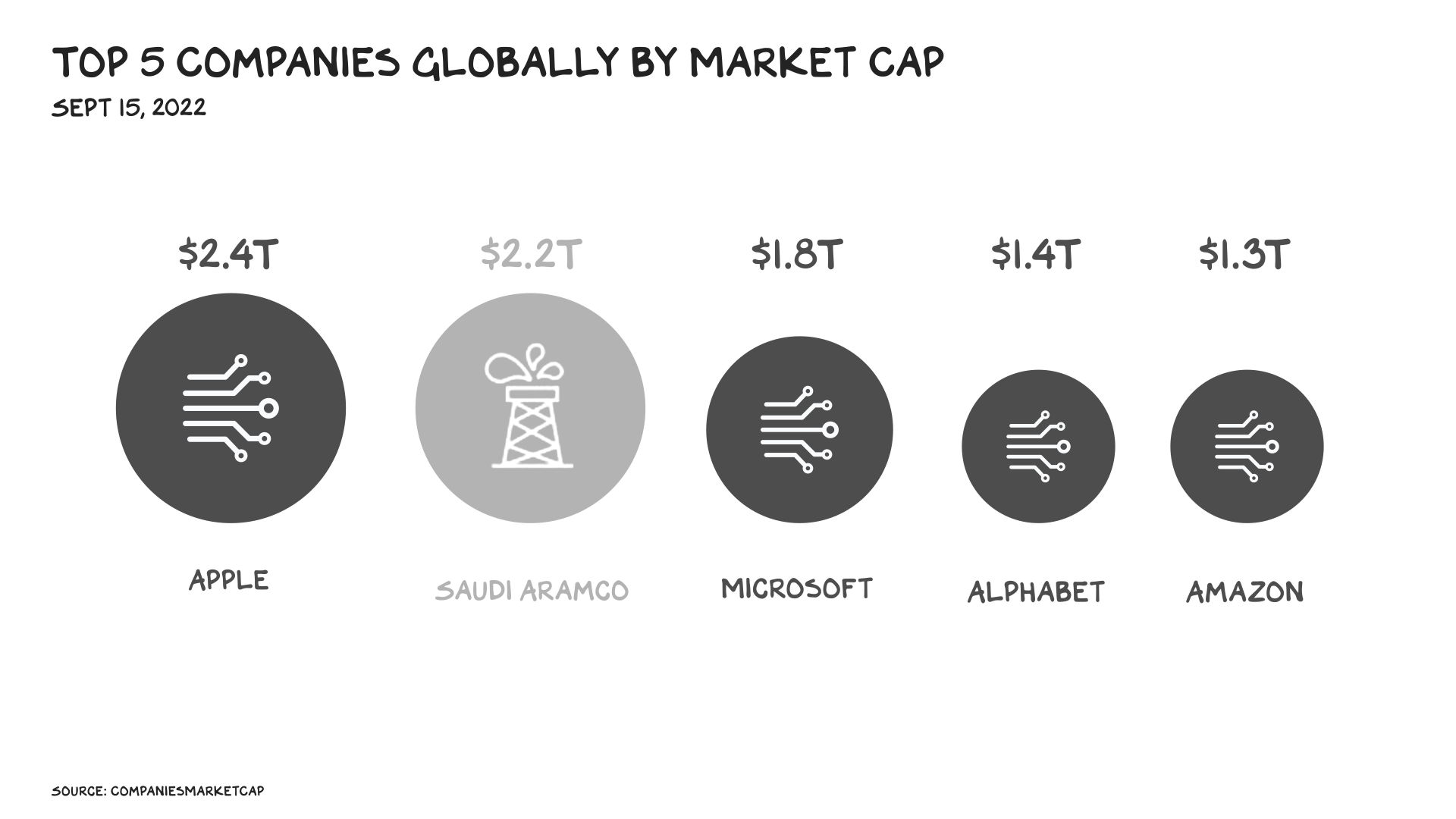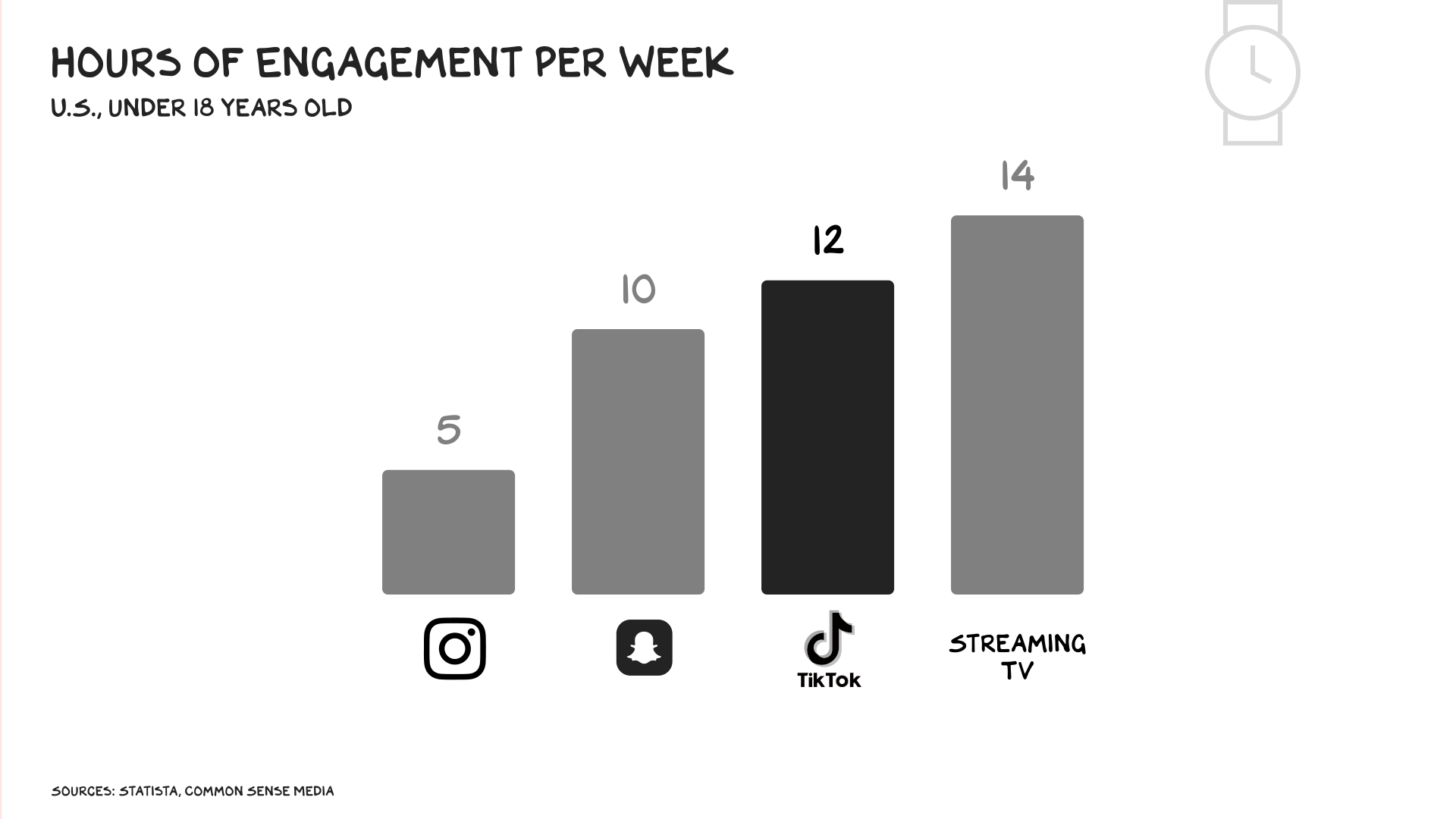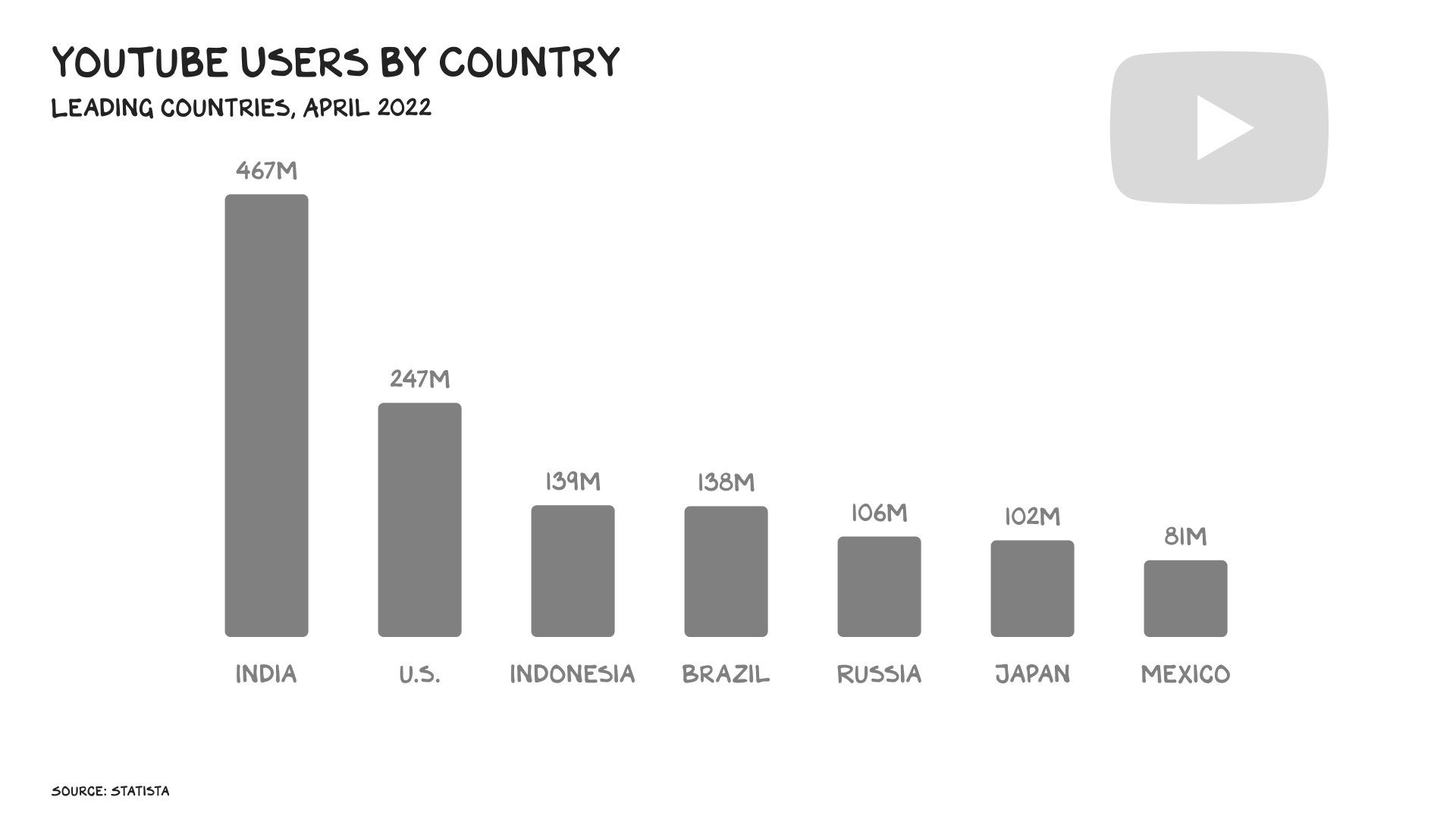Attentive
Courtesy of Scott Galloway, No Mercy/No Malice, @profgalloway
For the better part of the past century, the most important commodity has been oil. Wars have been fought over it — Pearl Harbor was a preemptive strike to secure Japanese access to Indonesian oil — and it elevated desert tribes to the ranks of the wealthiest cohorts in history. But the sun has passed midday on oil’s supremacy. We’ve moved from an oil economy to an attention economy.
We used to refer to an information economy. But economies are defined by scarcity, not abundance (scarcity = value), and in an age of information abundance, what’s scarce? A: Attention. The scale of the world’s largest companies, the wealth of its richest people, and the power of governments are all rooted in the extraction, monetization, and custody of attention.
Commercial exploitation of attention is not new. Humans have been competing for attention since the days when nomadic leaders argued over which branch of the river to follow and turning “content” into wealth since Aeschylus produced the Oresteia. Oil was elevated by the invention of the internal combustion engine, industrial revolutions in mechanization and plastics, and the development of a Western lifestyle dependent on the mobility of goods and humans. Now the shift from atoms to bits — digitization — has put wells into pockets, on car dashboards, and on kitchen counters, drilling night and day for … attention.
The largest companies by revenue are still mostly oil companies, but the most valuable companies are mostly attention-seeking enterprises — Big Tech holds 4 of the top 5 spots. From Apple to Amazon, Facebook to Fox News, Twitter to TikTok, tech and media companies are the sheikhs and wildcatters finding and capping our attention. And, just as in the rise of the oil economy … there will be blood.
Artisan Attention
There are more players in the attention economy than just the tech and media giants. Podcasting is a high-growth, low-barrier-to-entry opportunity for newcomers to harvest attention, and (for about 1% of them) to convert it to wealth. Conferences are a nice business of in-person attention harvesting. Substack has spurred a modest revival of the email newsletter, Salesforce paid $30 billion for Slack’s command of workplace attention, and Spotify is leveraging our music listening attention into a platform for all media.
Conferences, newsletters, and even music streaming are all artisan projects, bit players in the shadow of the supermajors. Even a mega-conference like the 130,000-strong Comic Con is a sub-2.0 flutter on the Richter scale of the broader attention economy. The biggest players measure monthly active users in hundreds of millions.
Supermajors
However, the attention economy is defined by disruption, and even the giants are susceptible. If Facebook is Exxon and Netflix Shell, TikTok is fracking king Chesapeake Energy, the rule-breaking insurgent armed with novel extraction methods that threaten the established order. Like oil, attention must be extracted, processed, and monetized. Disruption occurs when innovators re-architect the attention economy value chain.
Pre-digital attention entrepreneurs drilled for attention with interesting or entertaining content such as a newspaper or TV show, and monetized it through subscriptions and ads. The first wave of innovation was driven by the infinite capacity of digital storage and distribution: the bottomless well of choice. Netflix rose to dominance by cracking a gusher of classic sitcoms and rewatchable movies. More commercial-free content extracted more attention. By 2016 that was enough to make Netflix bigger than the entire industry it supplanted, cable TV. But the scale was linear, with few network effects.
Social media brought two major innovations. The first was to offload content production, and its cost, onto the user. No matter how efficient Netflix gets at producing shows in multiple languages, or how shamelessly Disney milks its existing IP, their economics are dwarfed by TikTok or YouTube, where consumers build the content drill rigs that the platforms monetize.
Next, the social media companies broadened the very notion of what content could be. Twitter, Facebook, and Reddit feature “content” in the traditional sense, but they turn the emissions (users’ comments) into content that’s still more valuable (addictive even) as it has more emotional resonance. By emotional resonance I mean they satisfy a deep need for others’ approval or they enrage us. The comments/replies, the pissing match, the rapidly brigaded insanity is what mines attention and emotion. It’s as if Exxon found a way to make heroin out of exhaust. Connecting the world has augured a simple question: Should we be this connected without having a commensurate presence? You’d never say (much of) this shit to people in person. And anonymity enables fake accounts and bad actors, which platforms tolerate so they can profit from greater noxious emissions.
FrackTok
While the sewer of ad-driven social media enragement was contaminating the water table, a new innovator arrived. TikTok is remixing the attention economy value chain. The short-form video platform relies on the economics of user-generated content, but it takes a narrower, less “social” approach to delivery.
Netflix rose on the back of infinite choice. Choice, however, comes with a hidden cost: the cognitive work of choosing. TikTok asks less of its consumers than any platform since broadcast television. Open the app, and a video starts playing. A single swipe at the end of every video tees up the next one. An algo watches how long you watch, what you watch to the end, and whether you like or follow, and manicures a streaming network that is singular. You can get more involved, following individual creators and even responding, but the app is built around a passive experience. TikTok’s recombination of attention economy capabilities makes it the new apex predator: The app commands more attention per user than Facebook and Instagram combined. And among teens it’s catching up to the passive king itself, television.
Externalities
Fossil fuel’s externalities are now well understood. An economy built on burning carbon has had a catastrophic impact on the planet. The advent of fracking led to huge profits and a recalibration of the oil economy, but at increased cost: flammable water, earthquakes, and chemical leaks.
Though it’s wrapped in dance and dog videos, TikTok comes with many of the problems linked to algorithmically generated content and platforms. A Wall Street Journal investigation found new accounts registered as belonging to 13- to 15-year-olds would veer down “rabbitholes” of sex- and drug-related videos in just days, simply by lingering on initial, tamer videos with those themes. And TikTok comes with an additional, unique externality: its links to the Chinese Communist Party. The potential risks in that relationship have been recognized by our last two presidents. I’m particularly concerned with the propaganda potential of the platform.
To be clear, there is no evidence the CCP has manipulated content to undermine American interests. What is also clear: A headjack installed on America’s youth, who spend more time on TikTok than any other network, that connects them to a neural network that may be shaped by the CCP is a risk we cannot tolerate. If the product cannot be separated from the ownership (e.g., spun off or acquired by Western firm), I believe the app should be banned. Putting the term “ban” so close to the term “media” justifiably raises concerns. An easier argument may be that we should have a reciprocal approach with China re media businesses. (See above: Ban TikTok.)
It was a theme sounded by others at the Code conference. When I asked Axel Springer CEO Mathias Döpfner for his thoughts on TikTok, I expected a watered-down “we’re watching them” nothing-burger response. (That’s the protocol for a public company CEO.) Instead: “It is of course a tool of espionage … TikTok should be banned in every democracy.” There are signs of momentum: rumored regulations that could result in a ban, and calls for app store bans from FCC Commissioner Brendan Carr. We banned Russian oil, why not Chinese (potential) propaganda? Others see it differently: After I spoke about the issue on Bill Maher last week, several prominent tech journalists said my TikTok rant was distracting us from the real issues in the industry, including privacy and data reform. But this isn’t a zero-sum shitstorm. Big Tech offers us more than one threat, and I’ve been warning about those posed by Facebook and other platforms for years. We can walk and chew gum at the same time.
What’s Next
Is TikTok the ultimate evolution of the attention-economy titans? Everyone else in the attention economy is acting like it. Original content is out. CNN+ was unplugged; Netflix is churning subscribers and has shed 70% of its market cap; households are canceling cable and streaming subscriptions in record numbers; and two tech platforms that tried to launch their own original content streaming services just threw in the towel: YouTube Originals shut down in January, and Snap Originals followed in August.
Instead, everyone is trying to outTik the Tok. Netflix launched “Fast Laughs,” Instagram introduced “Reels,” YouTube brought out “Shorts,” Snap did “Spotlight,” Roku is trying “The Buzz,” Pinterest launched “Watch” … even Twitter is exploring a TikTok-like product. I think they should call it Vine. Just a thought.
Internal documents at Meta reveal that users spend less than a tenth of the time watching Instagram Reels as they do watching TikTok. Reels engagement is in fact falling, perhaps because a third of the videos on the platform are created on a different platform (usually TikTok, complete with watermark). Meta has tried to algorithmically “downrank” these videos so they receive less traction, but they remain pervasive. Users are actively resisting these product changes. After Kim Kardashian and Kylie Jenner spread a meme asking Meta to “Make Instagram Instagram Again,” a petition gained, at last count, 312,000 signatures. The petition will fall on (Mark’s) deaf ears. Meta is not innovative (see Oculus and fever dreams of a legless hellscape), just the fastest follower in social. Note: Many who pushed back on my calls to break up Meta and let the market do its job have an increasingly strong argument, as the company’s stock is at a five-year low.
Red Pill
TikTok’s short-term dominance at the front end of the attention extraction business won’t be stopped by anyone who doesn’t hear “Hail to the Chief” every time they walk into a room. However, if you check this space five years from now, will TikTok still be a supermajor in the attention economy? If the answer is no, I’d posit that the likely dragon reigning over, and defending, Kings Landing will be YouTube.
Fifty-six percent of Americans watch YouTube on a daily or weekly basis. Ninety-five percent of teens use the platform, compared to a third who use Facebook and two-thirds who use TikTok. Back in 2019, YouTube disclosed that users were uploading more than 500 hours of footage to the site every minute, a number that’s likely much higher today. Last year the platform generated almost $29 billion in advertising revenue — roughly equal to Netflix’s total revenue.
As with so much in business and biology, diversity is key. Oil can be found in the desert, under the sea, or in the tundra, and extracting it from each ecosystem demands a unique skillset. Likewise, refiners convert crude into gasoline, natural gas, lubricants, and aspirin. No attention-economy player has the diversity of YouTube. Videos can be as short as one second or as long as 12 hours. Some are user-generated, others are studio-produced. (In fact, the second half of my Bill Maher appearance was produced specifically for YouTube.)
You can socialize (argue) with people in the comment section, or you can just use it as you would a streaming platform. More and more people turn to YouTube for more and more reasons: home improvement projects, makeup advice, music videos, product reviews, etc. You can load up infinite videos on a topic or from a creator, subscribe to your favorites, or just let the recommendation algo take over. While it depends on user content, YouTube isn’t passively waiting for that content to arrive. The company’s strategic partnership managers advise about 12,000 creators. According to a senior director, if a YouTube star doesn’t post once week, their manager is “likely to know why.”
YouTube’s kevlar is its betweenness, especially on the creator end. Users can get their start with low-production vlogs and selfie videos — just as they do on TikTok. However, as your following grows, the scale of your production can grow with you, bringing longer videos, broadcast-quality camera crews and performers, and increased costs commensurate with revenue. A prime example of this is YouTuber Jimmy Donaldson, otherwise known as MrBeast. MrBeast started making cheap gaming videos and commenting on YouTube dramas.
As his YouTube subscriber base grew, so did Donaldson. Today, MrBeast creates formidable productions with reinvested earnings. His most popular video, a real-life reenactment of Squid Game, cost $3.5 million to produce (the cost of an episode of Mad Men). It received 300 million views. This is the sort of content that currently doesn’t happen on TikTok, whose specialized attention-extraction tech has a much more limited range. Now, Donaldson is refining his attention to offline energy, with a burger restaurant (it drew 10,000 fans opening day) and cloud kitchen venture.
What to Do
Any massive increase in wealth over a short period is accompanied by externalities. There is no free lunch. OK, maybe caffeine. The externalities are typically opaque, and the parties best able to address them early are incentivized to create weapons of mass distraction to delay and obfuscate while they achieve economic security for themselves and their families. It’s also clear that the longer the externality runs unfettered, the more damage is done and (exponentially) greater the cost to address the issue. TikTok’s COO, Vanessa Pappas, didn’t wrap herself in glory at this week’s congressional hearings. She was over-consulted by her comms team and claimed that ByteDance has no headquarters, as it’s “a distributed company.” Despite the awesome news that there’s a new class of firm we can legitimately call a DisCo, being full of shit only fosters additional resentment against the company, and the uncomfortable link it’s forged between the CCP and the emotions and beliefs of a rising generation of American citizens.
This shouldn’t distract us from the (still) clear and present danger American platforms present to our privacy, teens’ mental health, and our less and less civil discourse. The leaders of American media platforms don’t suffer from immorality but amorality — indifference and dissonance about the damage their companies do. When it’s raining money, your vision gets blurred.
An autocratic government that seeks to diminish America’s standing and way of life is, in my view, immoral. There is evidence that the CCP has used, and will continue to use, all assets at its disposal to undermine U.S. interests domestically and abroad. TikTok should be spun to Western investors or treated the way China treats American platforms: kicked out.
Life is so rich,
![]()
P.S. We could all stand to be more productive. Our Productivity & Performance Sprint closes enrollment on October 4. Watch the first lesson for free, then upgrade to membership to sprint with a group.



